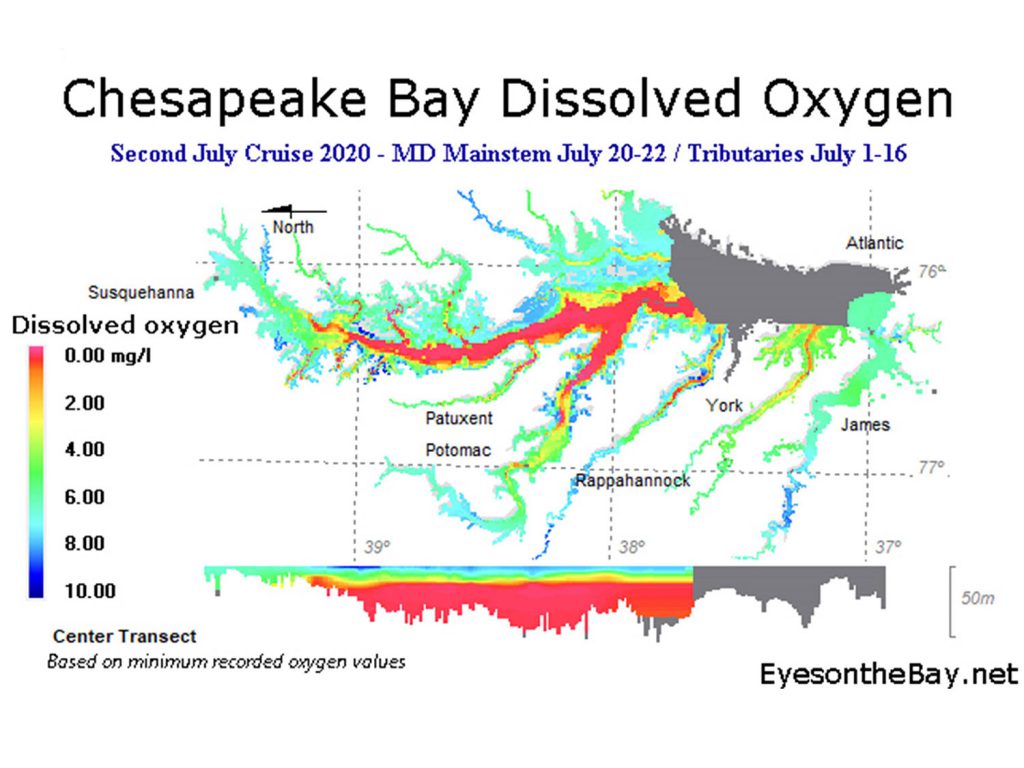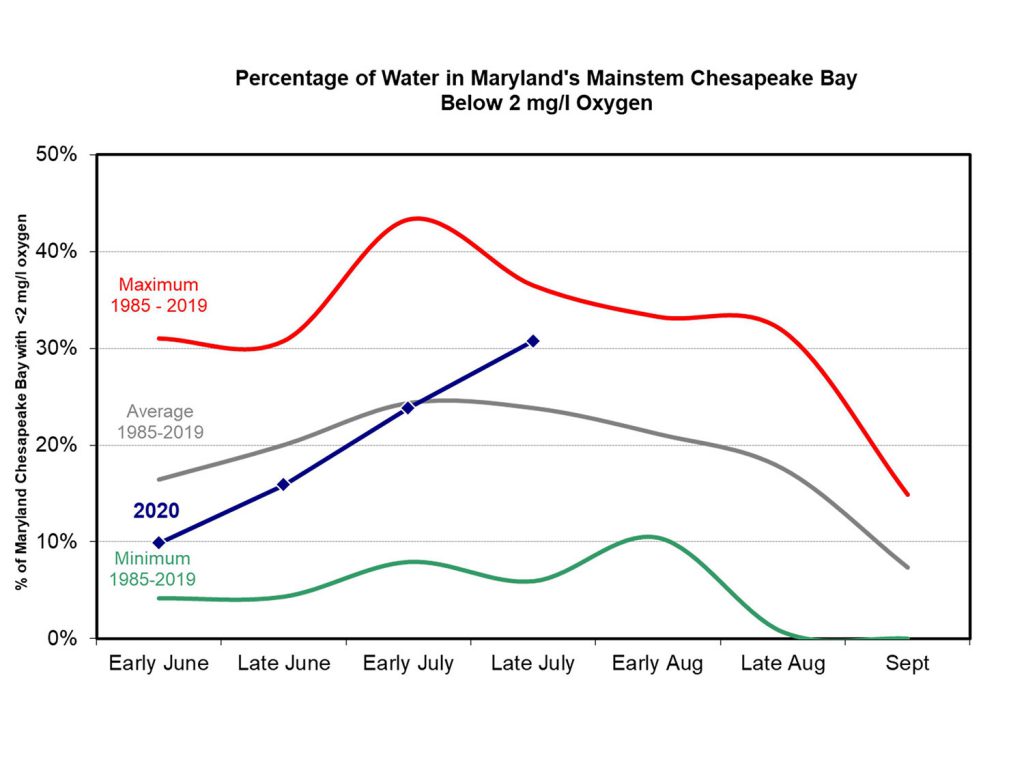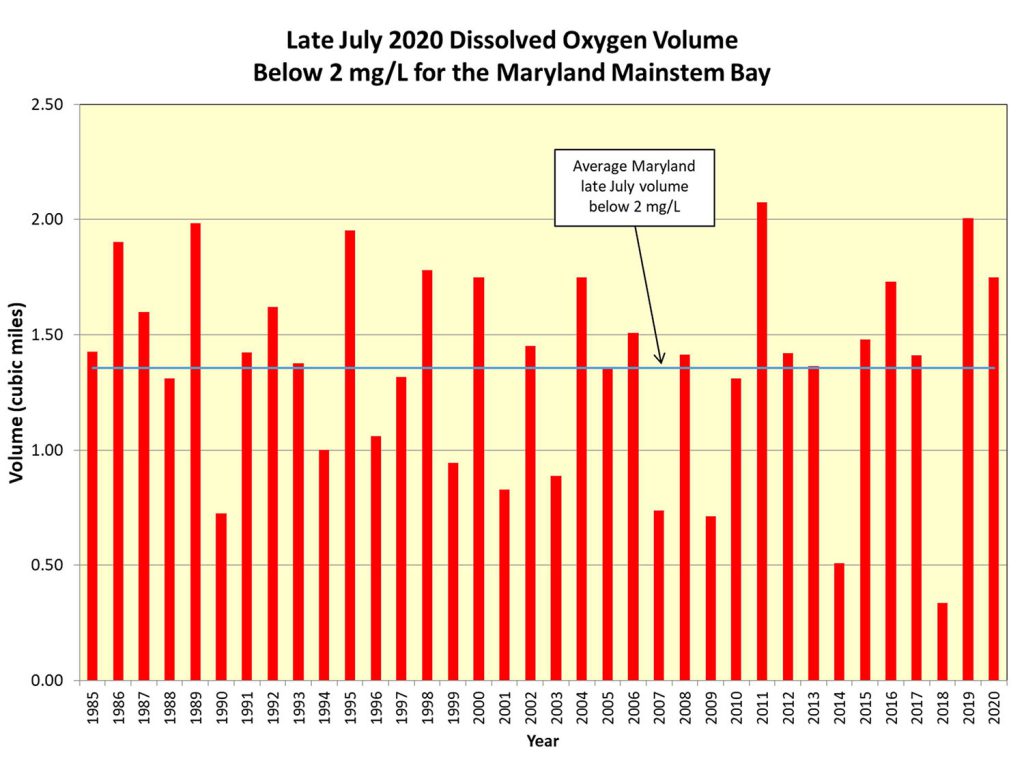Late July 2020 Hypoxia Report
Record July temperatures drive worse than average Bay oxygen conditions
Maryland Department of Natural Resources (DNR) monitoring data show that dissolved oxygen conditions in the Maryland portion of the Chesapeake Bay mainstem were worse than average in late July 2020. The hypoxic water volume (areas with less than 2 mg/l oxygen) was 1.75 cubic miles compared to a historical late July average (1985-2019) of 1.36 cubic miles. Virginia did not conduct late July Chesapeake Bay mainstem sampling. No anoxic zones (areas with less than 0.2 mg/l oxygen) were observed in the Maryland mainstem.
Based on historical data, bay hypoxia volumes normally peak during the early portion of July, but with Maryland experiencing its warmest July on record (NOAA, https://www.ncdc.noaa.gov/cag/statewide/mapping/18/tavg/202007/1/rank), conditions were ideal for promoting hypoxia throughout the month. Warmer waters hold less oxygen, and warmer surface waters can create a barrier to oxygen mixing into deep waters of the bay.
Maryland’s water quality data can be further explored with a variety of online tools at the Department’s Eyes on the Bay website (eyesonthebay.dnr.maryland.gov).
In mid-June, the EPA Chesapeake Bay Program, United States Geological Survey, University of Maryland Center for Environmental Science and University of Michigan scientists released their prediction for slightly smaller than average 2020 hypoxic conditions based on slightly less than average water and nitrogen flows into the bay from January – May 2020.
Crabs, fish, oysters and other creatures in the Chesapeake Bay require oxygen to survive. Scientists and natural resource managers study the volume and duration of bay hypoxia to determine possible impacts to bay life. Each year (June-September), the Maryland Department of Natural Resources computes these volumes from data collected by Maryland and Virginia monitoring teams during twice-monthly monitoring cruises. Data collection is funded by these states and the Environmental Protection Agency’s Chesapeake Bay Program. Bay hypoxia monitoring and reporting will continue through the summer.




 1-888-373-7888
1-888-373-7888 233733
233733